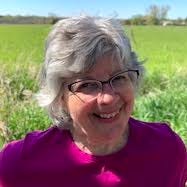
The dairy cattle judging dynasty continues.
At World Dairy Expo in Madison, Wis., the University of Minnesota dairy cattle judging team placed first overall in the national intercollegiate contest for a second year in a row.
The Minnesota team also placed first in Ayrshire, second in Holstein, second in Red and White, and fourth in Milking Shorthorn judging categories. Plus, U-M team members place second overall in the oral reasons category, with all four team members among the top eight individually. There were 73 four-year collegiate students competing in the contest.

TAKING FIRST: The University of Minnesota dairy cattle judging team took first place at the national intercollegiate dairy cattle judging contest at World Dairy Expo, Madison, Wis. Team members and coaches are (from left) Les Hansen, coach; Alicia Thurk, coach; Crystal Siemers-Peterman, Cleveland, Wis.; Ethan Dado, Amery, Wis.; Dane Thompson, Turtle Lake, Wis.; Gabriella Sorg, Hastings, Minn.; and Scott Ellinghuysen, coach. Missing from the photo is Eric Houdek, coach. (Photo: World Dairy Expo)
High rankings are no surprise to this college team. Over the past 15 years, U-M has had the best track record of any collegiate program among all universities, says Les Hansen, U-M dairy cattle judging team coach. In national collegiate contests, U-M dairy teams have placed among the top five teams in 14 of the past 16 years, and among the top three teams in 10 of those 16 years.
Following the U-M team’s first-place ranking were: University of Wisconsin-Madison, second; Cornell University, third; Iowa State University, fourth; and Penn State University, fifth.
U-M dairy cattle judging team members who competed at WDX were Dane Thompson, Turtle Lake, Wis.; Crystal Siemers-Peterman, Cleveland, Wis.; Ethan Dado, Amery, Wis.; and Gabriella Sorg, Hastings, Minn.
Individually, Thompson placed second overall, seventh in reasons, second in Guernsey, second in Holstein and fifth in Ayrshire. Siemers-Peterman placed 11th overall, fourth in reasons, third in Ayrshire and third in Red and White. Dado placed 15th overall, eighth in reasons and fourth in Ayrshire. Sorg placed 16th overall, sixth in reasons, first in Holstein and fourth in Red and White.
Judging team coaches, along with Hansen, are Scott Ellinghuysen, Alicia Thurk and Eric Houdek.
Working to win
When asked about a "winning formula," Hansen — also a dairy cattle genetics professor and adviser for the Gopher Dairy Club — attributed the team’s consistent high placings to its high-caliber students, coaching consistency and supportive dairy farms.
“We’ve had top dairy students, and we’ve been blessed with a consistent coach team across those years,” he says. “Plus, we have outstanding support from dairy farms that are willing to host our students for practice judging.”
Dedication to become a top dairy cattle judge also takes a lot of time and effort, especially for college students who are juggling classes and part-time jobs. Hansen was asked about what it takes for a team to prepare, and here is what he shared:
• Dairy cattle judging is a fall-season activity during the college year, with the team practicing on farms and competing in contests between Sept. 1 and Nov. 7. U-M dairy judging students also participate in a campus course for three months in winter and spring that focuses exclusively on oral reasons. Cows in the U-M campus dairy herd are used as the "classes" the reasons are based on.
“This fall, our students will visit 32 dairy farms to prepare for contestants,” Hansen says. “Participation in the dairy cattle judging program at the U is a major time commitment by students, and no absences are permitted from practices — it's all or nothing.”
• While on the road visiting farms to practice, students and coaches stay at hotels and work well into the evening, presenting oral reasons on what they saw in cattle.
“This all involves a tremendous amount of work by students, but they tend to enjoy the time immensely —visiting top dairy farms, discussing top dairy cattle and honing their public speaking skills,” Hansen says. “The practice sessions are an uplifting and joyful experience for everyone.”
• Before they start practice sessions, students must know the dairy cattle scorecard by heart. Other than that, they have only a pad of paper on which to take notes to prepare for the oral reasons that are presented from memory — and without notes — to justify their placings on classes of four heifers or cows.
At the national collegiate contest at World Dairy Expo, Hansen says contestants place 12 classes of four cattle. Then, in the afternoon, oral reasons are presented on six of those 12 classes without the aid of notes.
“The oral reasons must be compelling and convincing,” he adds.
• Time invested is more than just looking at pretty cattle. It involves a lot of miles on the road. Practice sessions on dairy farms span 13 days. The team travels to dairy farms in Minnesota, western Wisconsin and northeastern Iowa.
Hansen notes he has coached for 31 years at the U and that two alumni also serve as coaches —Ellinghuysen (18 years) and Thurk (12 years). That helps add to consistent coaching efforts.
“Without question, serving as a coach of the dairy cattle judging team is the most rewarding and enjoyable responsibility that I have at the University of Minnesota,” Hansen says. “What can be better — traveling with smart, committed dairy youth to top registered dairy herds and interacting with the owners of those wonderful dairy herds? Also, fall is often a beautiful time to be on dairy farms. The tremendous pride we have in our students when they perform well in contests is icing on the cake!”
About the Author(s)
You May Also Like






